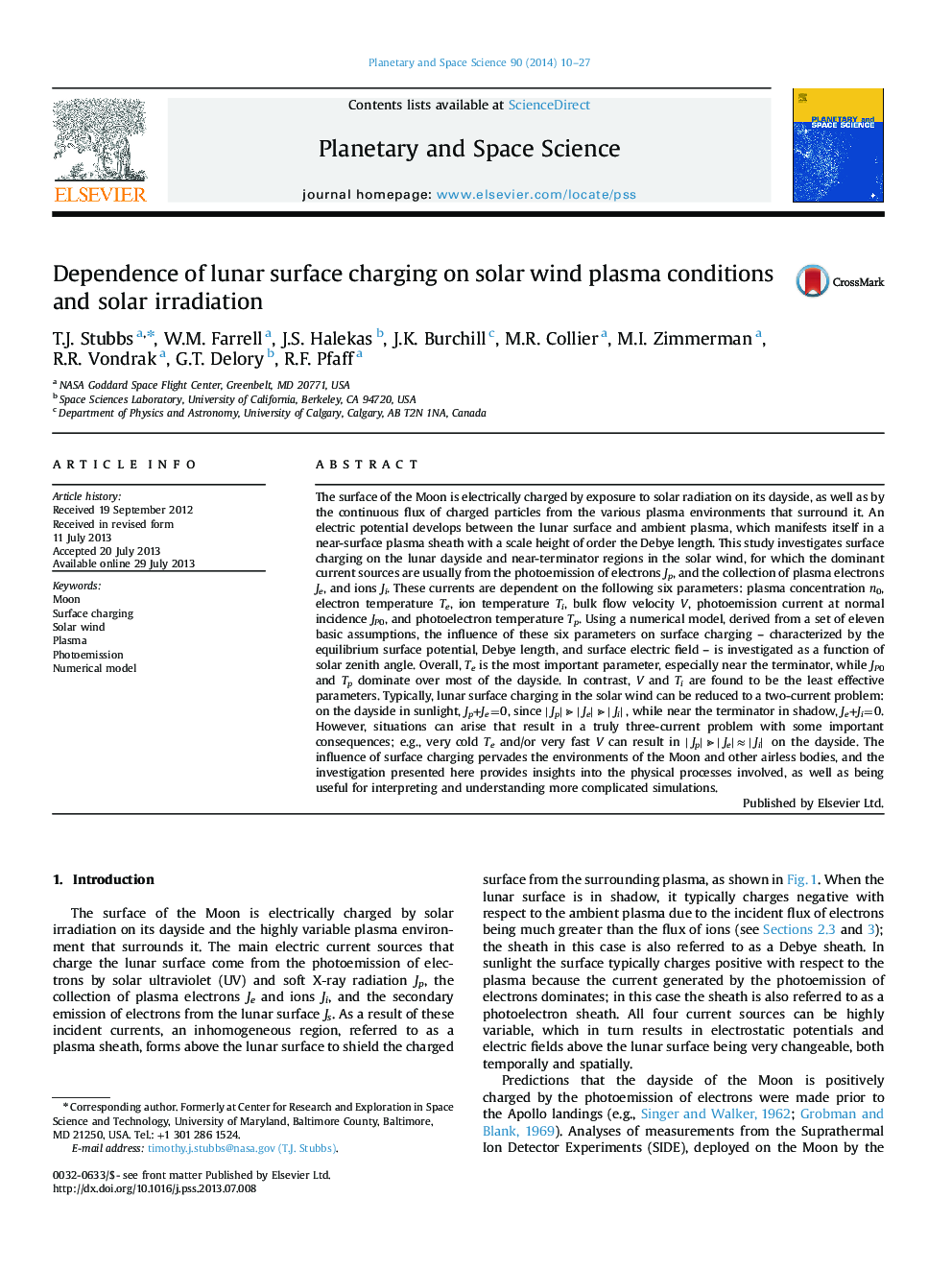| کد مقاله | کد نشریه | سال انتشار | مقاله انگلیسی | نسخه تمام متن |
|---|---|---|---|---|
| 1781177 | 1523946 | 2014 | 18 صفحه PDF | دانلود رایگان |
• Numerical and analytical models of lunar surface charging are derived and compared.
• The influence of six parameters on lunar surface charging is investigated.
• Lunar surface charging in the solar wind often reduces to a two-current problem.
• In general, surface charging processes are dominated by the electron populations.
• Model results are broadly consistent with lunar surface charging measurements.
The surface of the Moon is electrically charged by exposure to solar radiation on its dayside, as well as by the continuous flux of charged particles from the various plasma environments that surround it. An electric potential develops between the lunar surface and ambient plasma, which manifests itself in a near-surface plasma sheath with a scale height of order the Debye length. This study investigates surface charging on the lunar dayside and near-terminator regions in the solar wind, for which the dominant current sources are usually from the photoemission of electrons Jp, and the collection of plasma electrons Je, and ions Ji. These currents are dependent on the following six parameters: plasma concentration n0, electron temperature Te, ion temperature Ti, bulk flow velocity V, photoemission current at normal incidence JP0, and photoelectron temperature Tp. Using a numerical model, derived from a set of eleven basic assumptions, the influence of these six parameters on surface charging – characterized by the equilibrium surface potential, Debye length, and surface electric field – is investigated as a function of solar zenith angle. Overall, Te is the most important parameter, especially near the terminator, while JP0 and Tp dominate over most of the dayside. In contrast, V and Ti are found to be the least effective parameters. Typically, lunar surface charging in the solar wind can be reduced to a two-current problem: on the dayside in sunlight, Jp+Je=0, since ∣ Jp∣ ⪢ ∣ Je∣ ⪢ ∣ Ji∣ , while near the terminator in shadow, Je+Ji=0. However, situations can arise that result in a truly three-current problem with some important consequences; e.g., very cold Te and/or very fast V can result in ∣ Jp∣ ⪢ ∣ Je∣ ≈ ∣ Ji∣ on the dayside. The influence of surface charging pervades the environments of the Moon and other airless bodies, and the investigation presented here provides insights into the physical processes involved, as well as being useful for interpreting and understanding more complicated simulations.
Journal: Planetary and Space Science - Volume 90, January 2014, Pages 10–27
